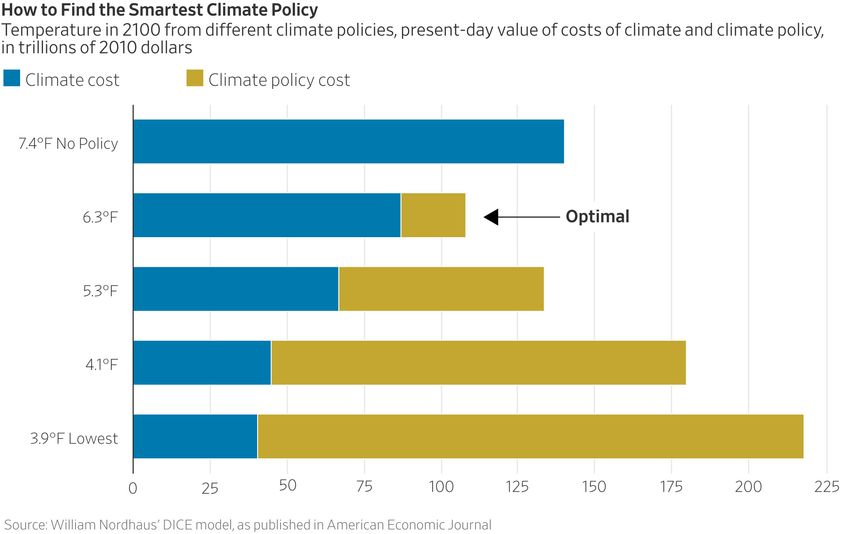(p. C3) Long-term economic growth is associated with both rising per capita energy consumption and slower population growth. For this reason, as the world continues to get richer, higher per capita energy consumption is likely to be offset by a lower population.
A richer world will also likely be more technologically advanced, which means that energy consumption should be less carbon-intensive than it would be in a poorer, less technologically advanced future. In fact, a number of the high-emissions scenarios produced by the United Nations Intergovernmental Panel on Climate Change involve futures in which the world is relatively poor and populous and less technologically advanced.
Affluent, developed societies are also much better equipped to respond to climate extremes and natural disasters. That’s why natural disasters kill and displace many more people in poor societies than in rich ones. It’s not just seawalls and flood channels that make us resilient; it’s air conditioning and refrigeration, modern transportation and communications networks, early warning systems, first responders and public health bureaucracies.
New research published in the journal Global Environmental Change finds that global economic growth over the last decade has reduced climate mortality by a factor of five, with the greatest benefits documented in the poorest nations. In low-lying Bangladesh, 300,000 people died in Cyclone Bhola in 1970, when 80% of the population lived in extreme poverty. In 2019, with less than 20% of the population living in extreme poverty, Cyclone Fani killed just five people.
Poor nations are most vulnerable to a changing climate. The fastest way to reduce that vulnerability is through economic development.
So while it is true that poor nations are most vulnerable to a changing climate, it is also true that the fastest way to reduce that vulnerability is through economic development, which requires infrastructure and industrialization. Those activities, in turn, require cement, steel, process heat and chemical inputs, all of which are impossible to produce today without fossil fuels.
For the full commentary, see:
(Note: the online version of the commentary has the date Jan. 23, 2020, and has the same title as the print version.)
Nordhaus’s commentary is related to the manifesto that he co-authored with many others:


